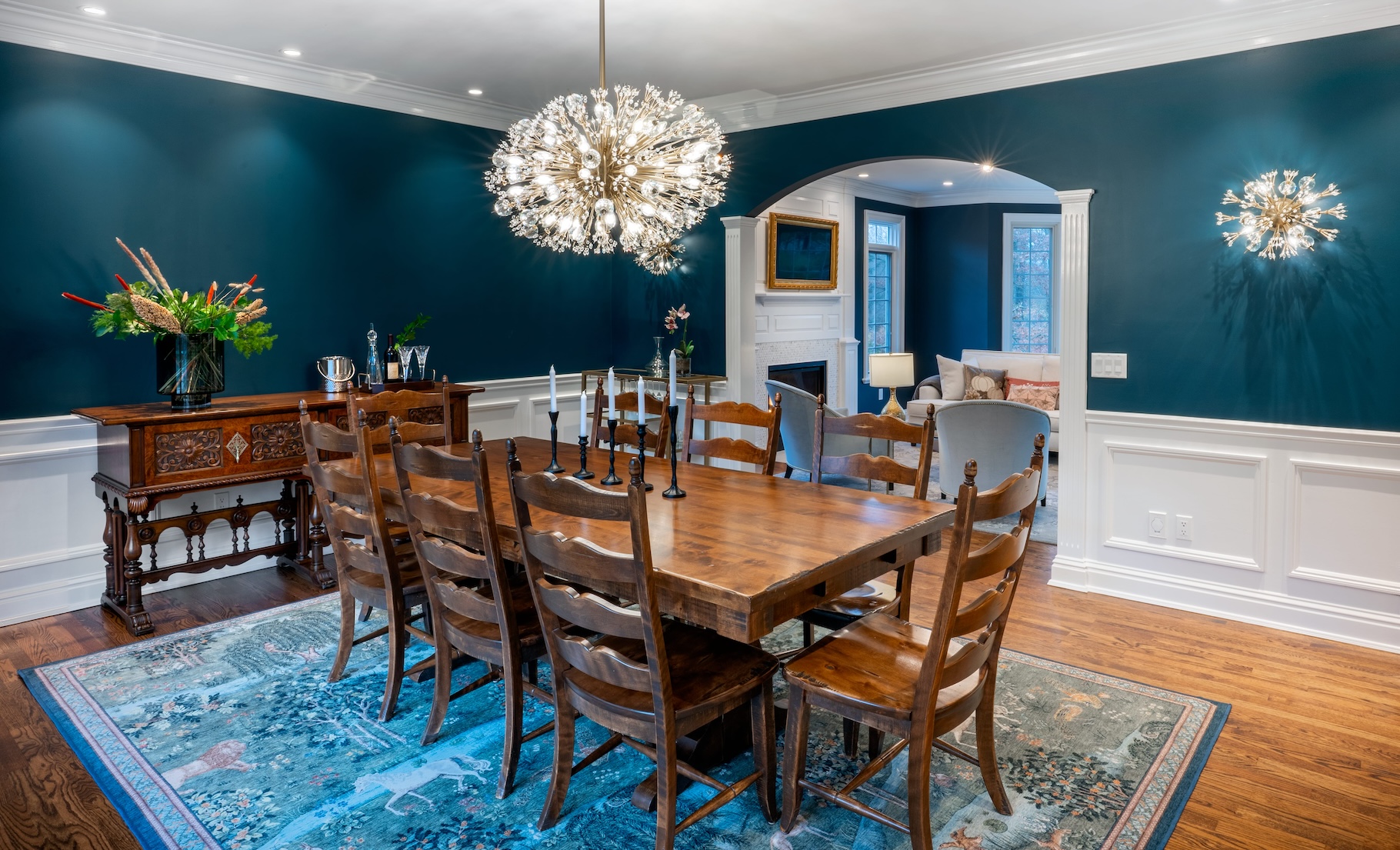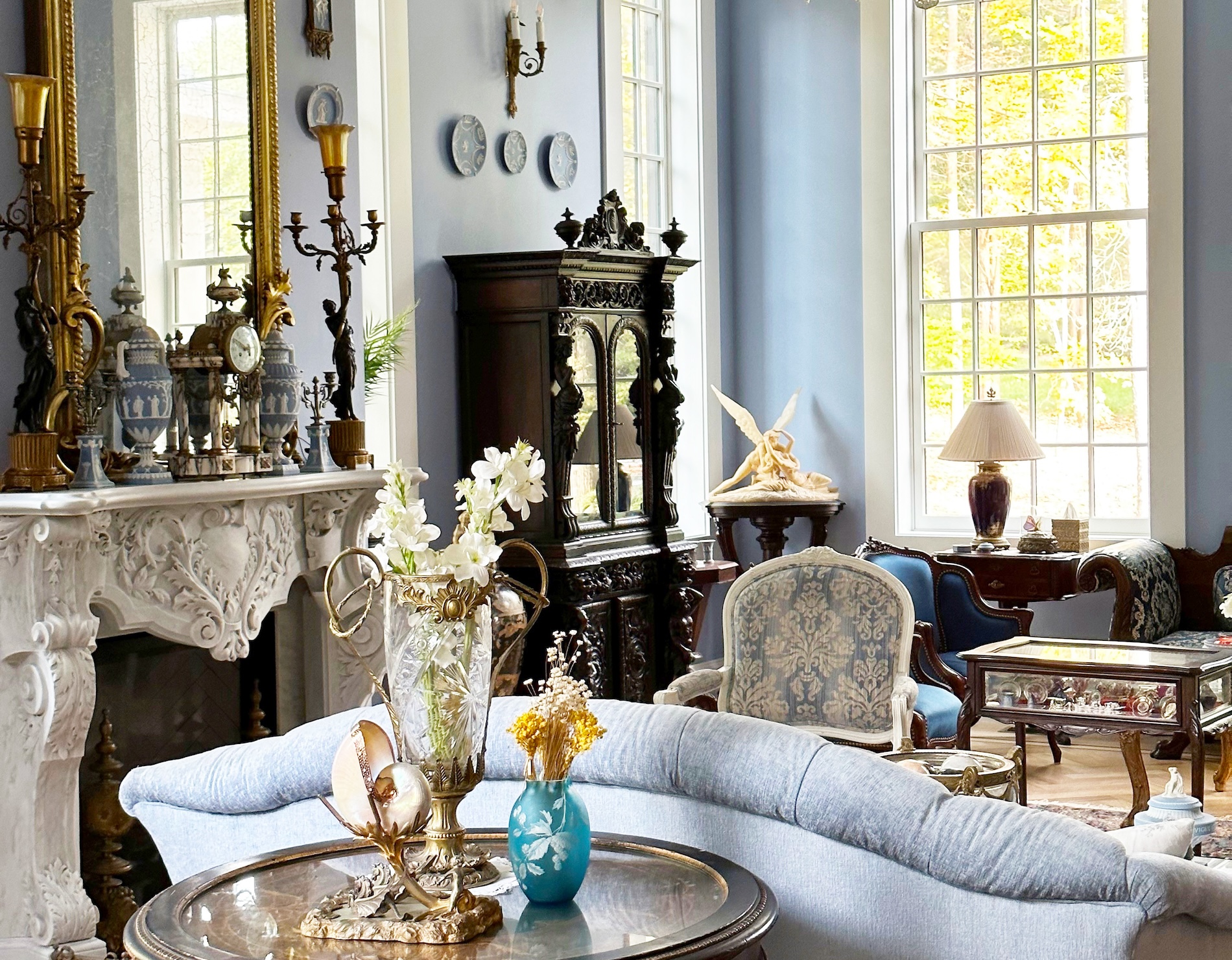Antique furniture has acquired a bad name over the past couple of decades.
Is that fair? Absolutely not. But as tastes change, furniture that can be considered “less-than-new” tends to fall out of favor. It’s a great thing for the design industry, since we thrive on new designs and bringing cutting edge looks to our clients’ homes and place of work.
At the same time there are some underlying systemic issues, many of them having to do with waste. Is it good for the environment to replace our furniture on such a regular basis? No, because most furniture isn’t high-quality enough to be worth saving and ends up in landfills.
We often recommend donating old furniture to places like Habitat for Humanity so that they can be upcycled. A counterpoint to this is that when you use restored antique furniture as part of the design of your home, you are actually helping reduce waste.
Before I dive into the various ways that you can use antique furniture and furnishings, there’s a question that I’m asked very regularly that I need to answer..
“What makes a piece of furniture an antique?”
It’s a good question! Technically, any object that is more than 100 years old is an antique. This applies to furniture, artwork, machinery, and in some cases, family members! Any object 50 years and older is considered vintage.
But just because something has age doesn’t mean that it will be a good antique. There are pieces of furniture that were considered cheap many decades ago that haven’t aged well—if your big-box store bookshelf is rediscovered in your basement by your great-grandchildren, it won’t necessarily have any intrinsic value.
What we are usually referring to when we’re talking about an antique is an object that meets the age threshold, but is also a particularly high quality piece, or something from a famous or high quality artisan or shop.
In some cases, it may come from a home or location that has some amount of fame or historic value (the history of an old piece is called its provenance, which is another topic for another blog post).
One of the questions that we get on a regular basis goes something like this: “We were cleaning out our grandmother’s house, and we ended up taking her antique dining room sideboard—we think it’s high quality, can we use this as part of the design for our spaces?”
The short answer is that as designers, we can artfully embed antique or family heirloom pieces seamlessly into designs for your space, but sometime the piece itself will drive the look and feel of the rest of the room.
“What about antique or vintage furniture in poor condition?”
The truth of the matter is that most good antique or vintage pieces can become stunning restored antique furniture with just a bit of care.
If you’ve watched Antiques Roadshow, you’ll know that once you remove the original patina from an antique piece you could very well be destroying much of its market value. This really only applies with pieces that are particularly high quality or have a very specific provenance—so-called “important” pieces.
Most antique pieces that you find in a store or consignment shop tend to be well-priced because there just isn’t as much of a demand for them, so restoration of these types of pieces will give them new life and new use, instead of a strictly preservationist approach.
“Can we actually use these antique pieces?”
The answer is yes, absolutely! They didn’t survive for 100 or more years to just sit there and look pretty. Although, that is often what they end up doing. But remember that these pieces were almost always made to be used, so we recommend that if you restore an antique piece, use it well, and if it starts to deteriorate over the decades, restore it again when it needs it.

It comes down to this question: How can we use restored antique furniture to create one-of-a-kind spaces for your home or place of business?
Here are some of the ways:
The Antique Room
If your home has some classic architecture and you happen to like certain antique styles, then the antique room is the way to go. We wouldn’t just use one piece, we’d look for many pieces! It can take time to acquire these pieces, but the end result is a fully curated antique look and feel for your space.
Even if other rooms in your home are more updated, a room styled mostly with antique pieces can work very well in the overall context as long as we consider bringing in colors and motifs from adjacent spaces.
These antique rooms are meant to be used. Many antique chairs and sofas can be very comfortable, so day-to-day use is certainly possible, and antique tables, cabinets, and other items tend to hold up very well—they’ve lasted this long, with a little bit of care they’ll continue to thrive.
The Anchor Antique
For the client who just acquired their grandmother’s sideboard, this is often the way that we’ll incorporate the piece into your home. We’ll take a good look at the antique piece and create an updated interpretation of the design of that piece to incorporate into your room or home.
Whether the style is traditional or transitional, or boho or whimsical, we can strike a good balance to make the antique piece blend right in and look completely natural and seamless.
The Ironic Antique
If you have a very modern home or overall aesthetic, you can still use the occasional antique piece and make it work for you! The ironic antique is a classic contrast approach—a fish-out-of-water, if you will.
A modern stone, metal and glass, entryway may be graced with a stunning antique chest-on-stand highlighted by a spotlight. It doesn’t match the architecture or style of the room, but it draws attention to itself and somehow feels appropriate.
Choosing pieces like this can be difficult, and it’s meant as an art statement more than a functional piece in situations like this, but it’s a really nice way of bringing some flair and visual interest to a modern setting.

The best thing about restored antique furniture and furnishings is that they’re so unique.
Many of them are one-of-a-kind, and others can be one of a handful of surviving examples from a certain craftsperson or factory. Regardless of where the pieces come from, if they lasted this long they hold the distinction of being survivors of the ages.
When you incorporate an antique piece in your home, you’re bringing in an object that has a long history, and that’s substantially older than you or me. And that helps make your space one of a kind.
If you need help choosing antiques for your home, work with an interior designer who understands the styles and eras they come from, and who has a strong grasp of furniture history and the decorative arts.
How do you find a designer like that? We’re right here, just get in touch!






